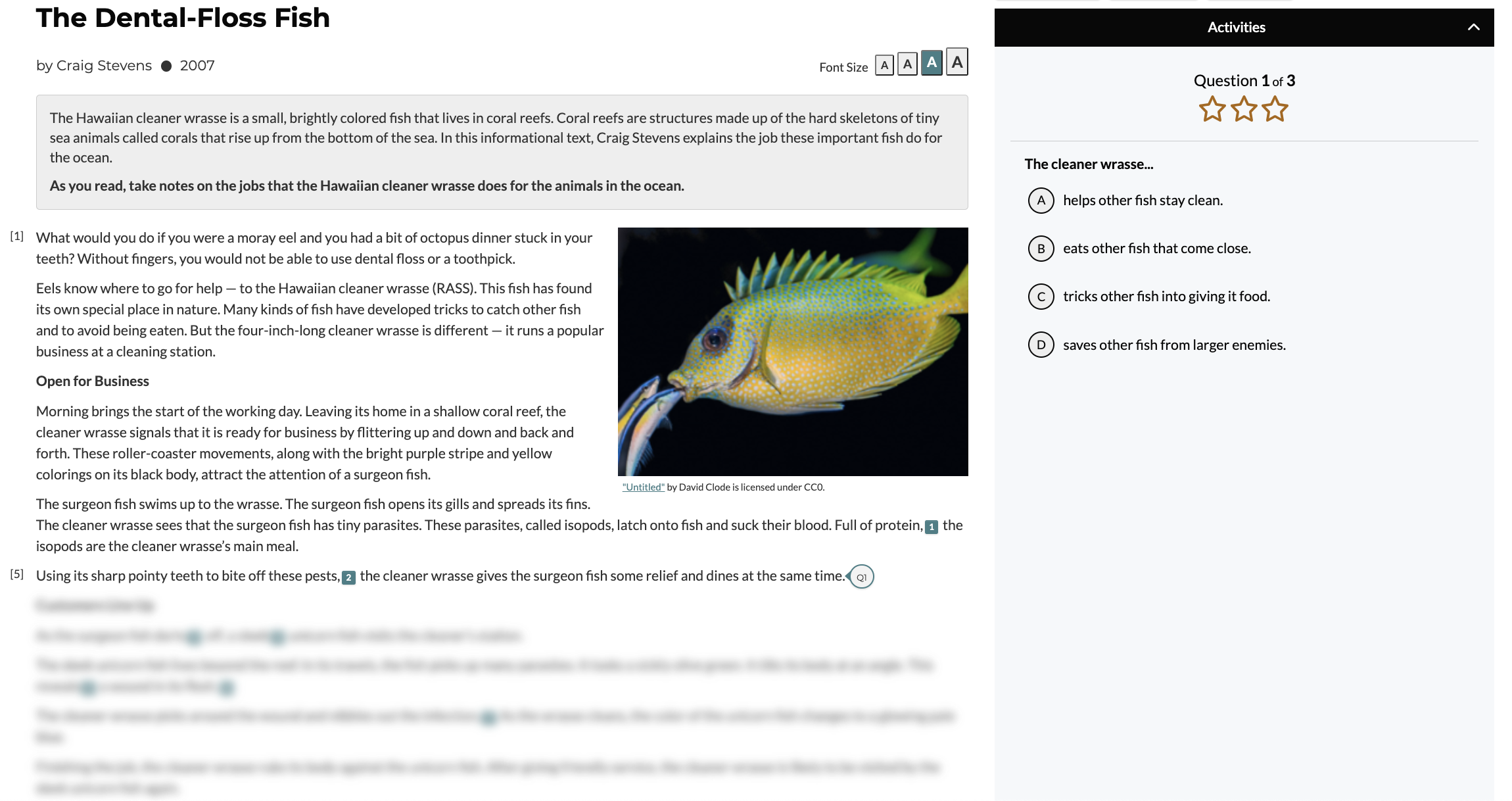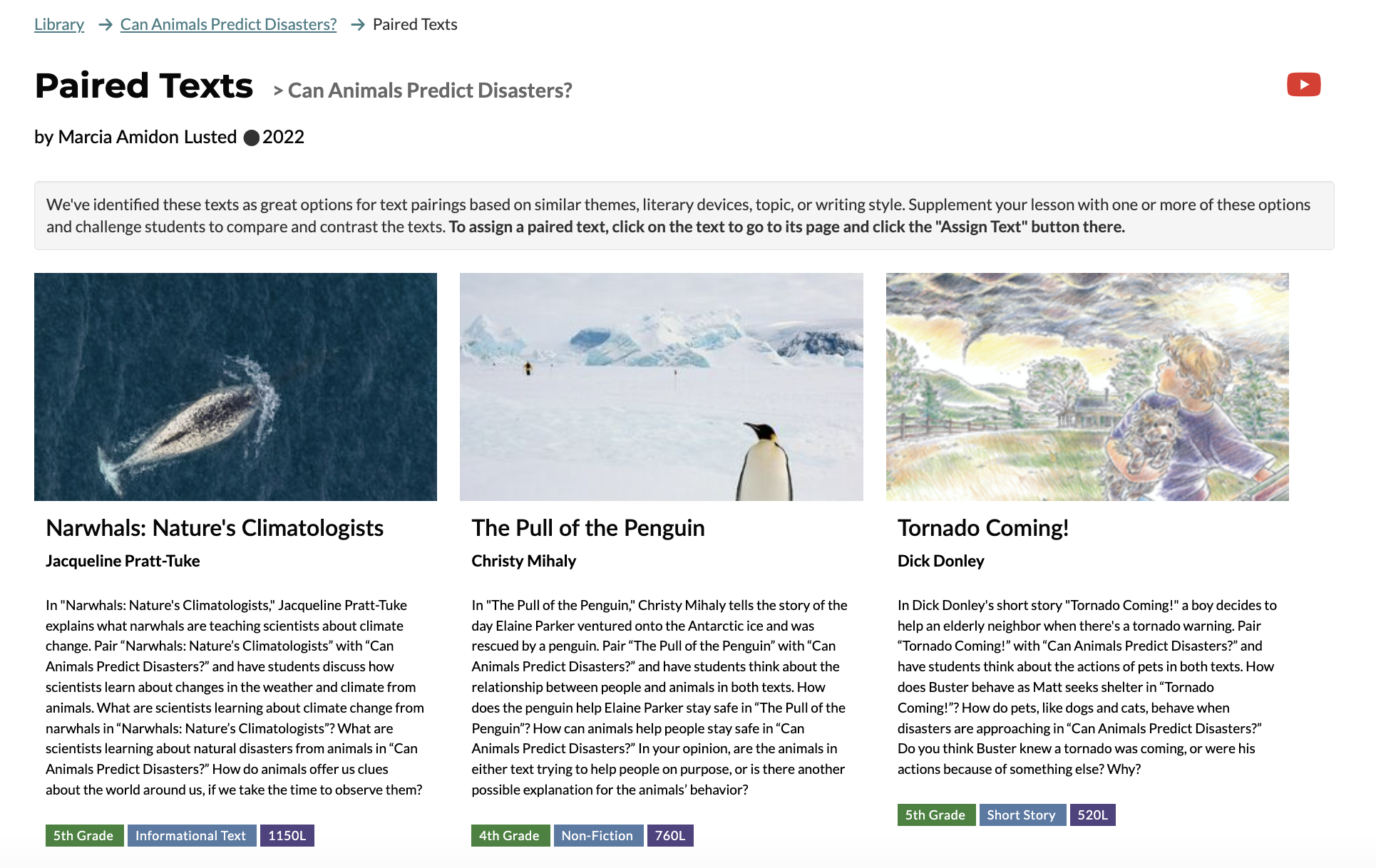Strengthen students’ reading comprehension with 8 informational texts about animals!
Through CommonLit’s digital literacy program, you can find more than one hundred non-fiction texts about animals to incorporate into your reading curriculum and inspire students’ curiosities about the world.
In this blog post, we’ll share 8 informational texts you can use to build a research unit on animals for elementary students.
“Flopping Frogs: Have scientists discovered why the tailed frog belly-flops?” Pamela Brunskill (3rd Grade)
This informational text shares research findings about tailed frogs of the Pacific Northwest. Instead of hopping on land like other frogs, tailed frogs can evade predators by belly-flopping on water.
Lead a classroom discussion with Discussion Question 3, “Animals, and people, have different features that make them special. What makes the tailed frog special? How do its different features help it to survive? What features do you have that make you special?”
“Under the Ice” by Alison Pearce Stevens (3rd Grade)
In this informational text, Stevens describes the birth and upbringing of seal pups in Antarctica. With help from their mother, seal pups learn how to swim, catch fish, and hide from predators to survive.
As students read, have them take notes on how seal pups learn to survive in Antarctica. They can use their notes to provide supporting evidence in their answer for Assessment Question 4, “How does the seal pup change as it grows?” This is a great text to teach the life cycles of Arctic animals or a research unit on animals.
“How to Find a Tortoise Nest (in the desert)” by Alexandra Wells (3rd Grade)
In this eye-opening text, Wells describes her experience studying baby tortoises in Mojave Desert.
Have students take notes on the author’s point of view towards the tortoises. Students can use their annotations to answer Assessment Question 5, “What is the author’s point of view about tortoises in the article?”
“Are Animals Inventors?” by Gail Jarrow and Paul Sherman (4th Grade)
This article explains how animals and insects, like termites, rodents, and ravens, invent tools to solve problems and make their lives easier, similar to humans.
Encourage students to make text-to-self connections with Discussion Question 1, “Humans use tools all the time, just like the animals in the article. Think of a time when you had a problem and needed to find a solution. What did you do to solve your problem? What tools did you use?”
“The Dental Floss Fish” by Craig Stevens (4th Grade)
This informational text describes how the Hawaiian cleaner wrasses help keep other sea creatures clean. These special fish clean other ocean animals by nibbling out infection from wounds, and removing loose scales, mucus, and parasites.
Show students the Related Media video “Symbiotic Animal Relationships” to teach them about other cooperative animal relationships in the wild. What can we learn from the relationships that animals have with one another? Why is it important that we work together with others?

“Sharks: Monsters or Misunderstood” by Marie Droual (5th Grade)
In this engaging read, Droual addresses common misconceptions about sharks and questions whether sharks are truly monsters or simply misunderstood.
Show students the Related Media video “Cool Facts About Sharks.” Ask students, how does the text and this video help you understand sharks better? Has your opinion about sharks changed after reading the article and watching the video? Why or why not? This activity will help students understand the main idea of the text.
“Can Animals Predict Disasters?” by Marcia Amidon Lusted (5th Grade)
For a long time, scientists have wondered if observing animal behavior can help humans predict natural disasters. Although animals may be able to detect environmental changes, there isn't a reliable way to use animals to forecast natural disasters.
Pair “Can Animals Predict Disasters?” with “Narwhals: Nature’s Climatologists” and have students discuss how scientists learn about changes in the weather and climate from animals. What are scientists learning about climate change from narwhals in “Narwhals: Nature’s Climatologists”? What are scientists learning about natural disasters from animals in “Can Animals Predict Disasters?”

“Taming Threats to the World’s Largest Cats” by Jacqueline Pratt-Tuke (5th Grade)
This article examines the dangers tigers face due to poaching and the measures being taken to help protect them in the wild.
Show students the Related Media video “What is an Endangered Species?” As students watch the video, have them listen for human-made and natural causes of animal endangerment. Then, ask students to discuss what can be done to help animals continue to thrive. Do students think it is easier to stop human-made causes, or natural causes? Why?
Next Steps
Looking for more informational texts about animals for elementary students? Start with CommonLit’s ready-to-use thematic units Animals and People or Protecting Animals! For more texts about animals, check out CommonLit’s text sets!
To help students practice finding the meaning of unknown words, check out the Target Lesson for “Shark: Monsters or Misunderstand,” focused on vocabulary building.
If you’re interested in learning all about CommonLit’s free online reading program, join one of our upcoming webinars!


